
Alabama

The current capitol building was built from 1850 to 1851, with Barachias Holt as supervising architect. Holt, originally from Exeter, Maine, was a master mechanic by trade. Following his work on the capitol he created a successful sash, door, and blind factory in Montgomery.
The new building utilized the brick foundations and general layout of Button's previous structure, with modifications by Holt. The modifications included a full three-story building over a basement and a three-story front portico, this time without a pediment. Holt's dome was a departure from the previous work also, this time the wood and cast iron dome was supported on a ring of Corinthian columns and topped with a simple twelve-sided glazed lantern. John P. Figh and James D. Randolph were the principal contractors. Figh had previously completed extensive brickwork on the William Nichols-designed campus for the University of Alabama at Tuscaloosa. Randolph was in charge of the carpentry work, which was at least partially accomplished by subcontractors. Nimrod E. Benson and Judson Wyman were the building supervisors.
The new capitol building was first occupied by the Alabama Legislature on October 1, 1851. The clock over the portico was installed in February 1852. The clock, along with a bell, was purchased by the City of Montgomery and presented to the state in 1852. In proportion to the capitol building, the clock appears as a square white box with black dials and crowned with a gabled roof. The dials are 10 feet (3.0 m) in diameter with 4-foot (1.2 m) minute hands and a 3-foot (0.91 m) hour hands. It has been criticized as architecturally inappropriate on various occasions since its initial installation. With the secession of Alabama and six other Deep South states and subsequent formation of the Confederacy in February 1861, the building served as its first capitol until May 22, 1861. A commemorative brass marker in the shape of a six-pointed star is set into the marble floor of the front portico at the precise location where Jefferson Davis stood on February 18, 1861, to take his oath of office as the only President of the Confederate States of America.
In 1961 Governor John Patterson flew a seven-starred version of the Stars and Bars over the capitol for several days in celebration of the centennial of the Civil War. His successor, George Wallace, raised the Confederate Battle Flag over the dome on April 25, 1963, the date of his meeting with U.S. Attorney General Robert F. Kennedy to discuss desegregation at the University of Alabama, as a symbol of defiance to the federal government. The flag remained there for almost 30 years. Several African American legislators and members of the state chapter of the NAACP were arrested in 1988 after attempting to remove the flag. The flag was removed during renovations to the dome in 1991, and its return was barred by a 1993 state court decision, which ruled that a state statute from 1895 allows only the national and state flags to fly over the capitol building.
The building served as home to the Alabama Legislature until 1985, when it moved to the Alabama State House. Officially, this move was temporary, since the Alabama Constitution requires that the Legislature meet in the capitol. In 1984, a constitutional amendment was passed that allowed the Legislature to move to another building if the capitol were to be renovated. The renovation started in 1985 and was completed in 1992 by the architecture group Holmes and Holmes. Upon the reopening of the building, the Governor of Alabama and numerous other state offices moved back into the building, but the legislature remained at the State House.
On May 7, 2009, the legislature reconvened in the capitol building for the first time since September 20, 1985, due to flooding in the State House. This required some adapting, as the capitol did not have desks in the House chamber and those in the Senate chamber were 1861 replicas. Neither chamber has a computerized voting system. The capitol building's heating and air conditioning is supplied from the State House. Because the electricity had been turned off in the State House due to the flooding, there was no air conditioning in the capitol.
 |  |  |  |  |  | 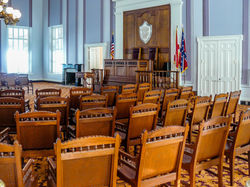 | 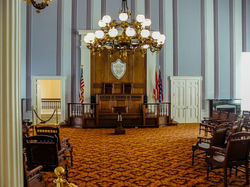 |
|---|---|---|---|---|---|---|---|
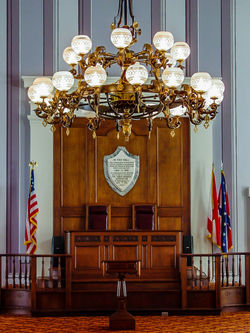 |  |  | 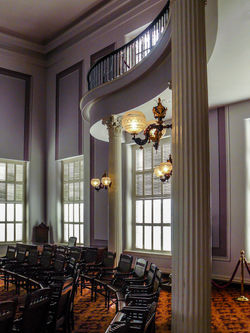 |  |  | 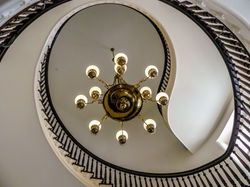 | 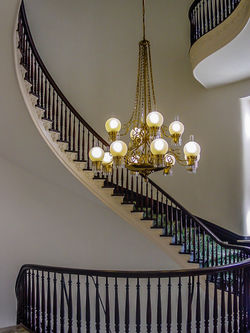 |